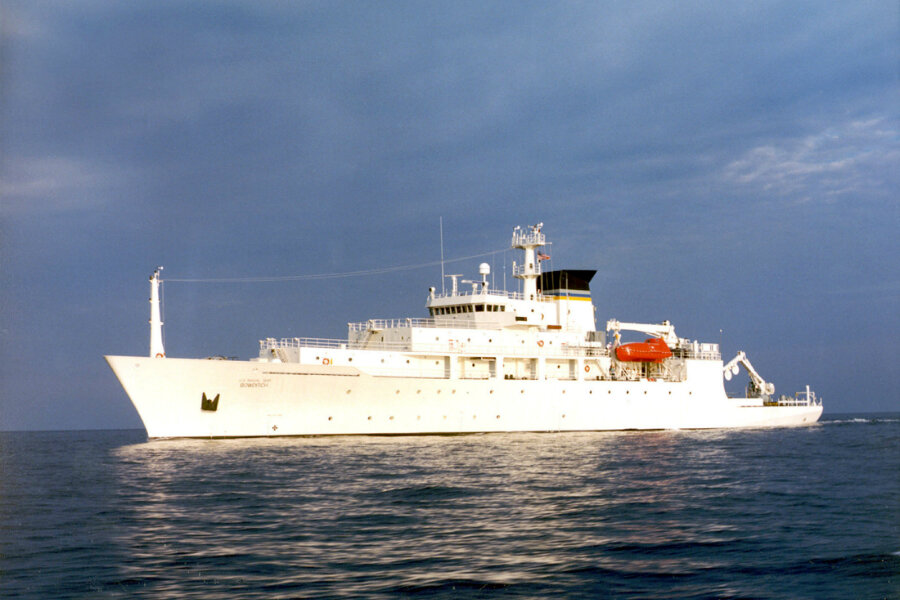Relations already tense, China warship seizes US Navy underwater drone
Loading...
China has seized an unmanned US Navy glider, the Pentagon said on Friday.
The glider was taken about 50 nautical miles northwest of the Philippines, said Navy captain and Pentagon spokesman Jeff Davis, according to the Associated Press. The USNS Bowditch, a civilian oceanographic survey ship operated by the military, was retrieving two unmanned gliders, which had been collecting data about the water for use in sonar operations. The ship retrieved the first drone, but the second was captured by a Chinese rescue and recovery vessel.
The events may add to concerns about the future of the Sino-US relationship. Ties between the two countries have been strained in recent weeks, following President-elect Donald Trump’s phone call with the leader of Taiwan and indications that China is increasing its military presence in the South China Sea.
“This move, if accurately reported, is highly escalatory, and it is hard to see how Beijing will justify it legally,” said Mira Rapp-Hooper, a senior fellow in the Asia-Pacific Security Program at the Center for a New American Security, according to Reuters.
The Navy drones are programmable gliders, approximately 10 feet long and 2 feet wide. According to the Pentagon, they use commercially available technology. The two gliders that the Bowditch attempted to pick up were collecting unclassified scientific data in the South China Sea, an official told Reuters. Factors such as the temperature, clarity, and salinity of the water can affect sonar data, so having more information about these factors may help the military with sonar-reliant operations.
"The [glider] was lawfully conducting a military survey in the waters of the South China Sea," one official, who spoke on condition of anonymity, told Reuters.
As the Chinese Dalang 3 vessel left with the drone, officials said, it sent a radio message to the Bowditch: “We are returning to normal operations.” Repeated requests for the glider to be returned were acknowledged but went unanswered, they added.
In response, the US has issued a formal diplomatic complaint and is demanding the return of the glider.
"It is ours. It's clearly marked as ours. We would like it back, and we would like this not to happen again," Captain Davis told reporters, according to the AP.
The incident is the first of its kind in a number of years, Reuters noted, and comes on the eve of Mr. Trump’s inauguration as president, possibly raising concerns about the future of the relationship.
Trump repeatedly criticized China on the campaign trail, including blaming the country for American job losses. This month, he became the first US leader to officially speak with Taiwan’s leader since the US embarked on its “One China” policy in 1979. Though at least one state-run newspaper blamed Taiwan, not Trump, China nevertheless saw the phone call as an affront by the US.
US leaders, for their part, are concerned about increasing Chinese aggression in the South China Sea. Drawing on color satellite photos, the Asia Maritime Transparency Initiative, part of the Center for Strategic and International Studies, a Washington-based think tank, reported this week that China had militarized all seven of the artificial islands it constructed in the Spratly Islands area.
This report contains material from Reuters and the Associated Press.







